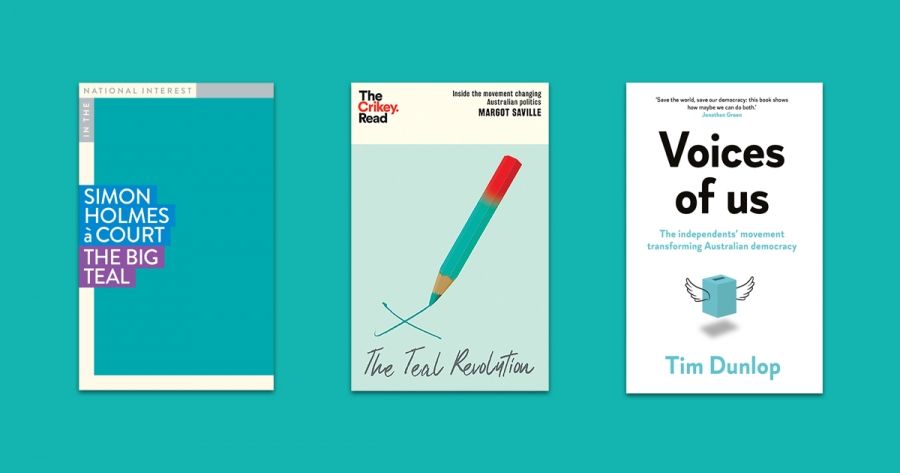
- Free Article: No
- Contents Category: Politics
- Custom Article Title: Three new books on the teal independents
- Review Article: Yes
- Article Title: Teal talk
- Article Subtitle: Exaggerating the independents’ revolution
- Online Only: No
- Custom Highlight Text:
One of the by-products of every election is the instant analysis, often in the form of small books that read like extended newspaper articles. The success of the teals at the 2022 federal election has already produced extensive speculation about whether this signals a sea change in Australian politics.
- Featured Image (400px * 250px):
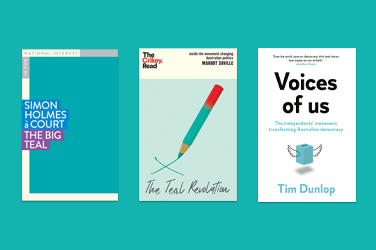
- Alt Tag (Featured Image): Dennis Altman reviews three new books on the teal independents
- Book 1 Title: The Teal Revolution
- Book 1 Subtitle: Inside the movement changing Australian politics
- Book 1 Biblio: Hardie Grant Books, $22.99 pb, 116 pp
- Book 1 Cover Small (400 x 600):
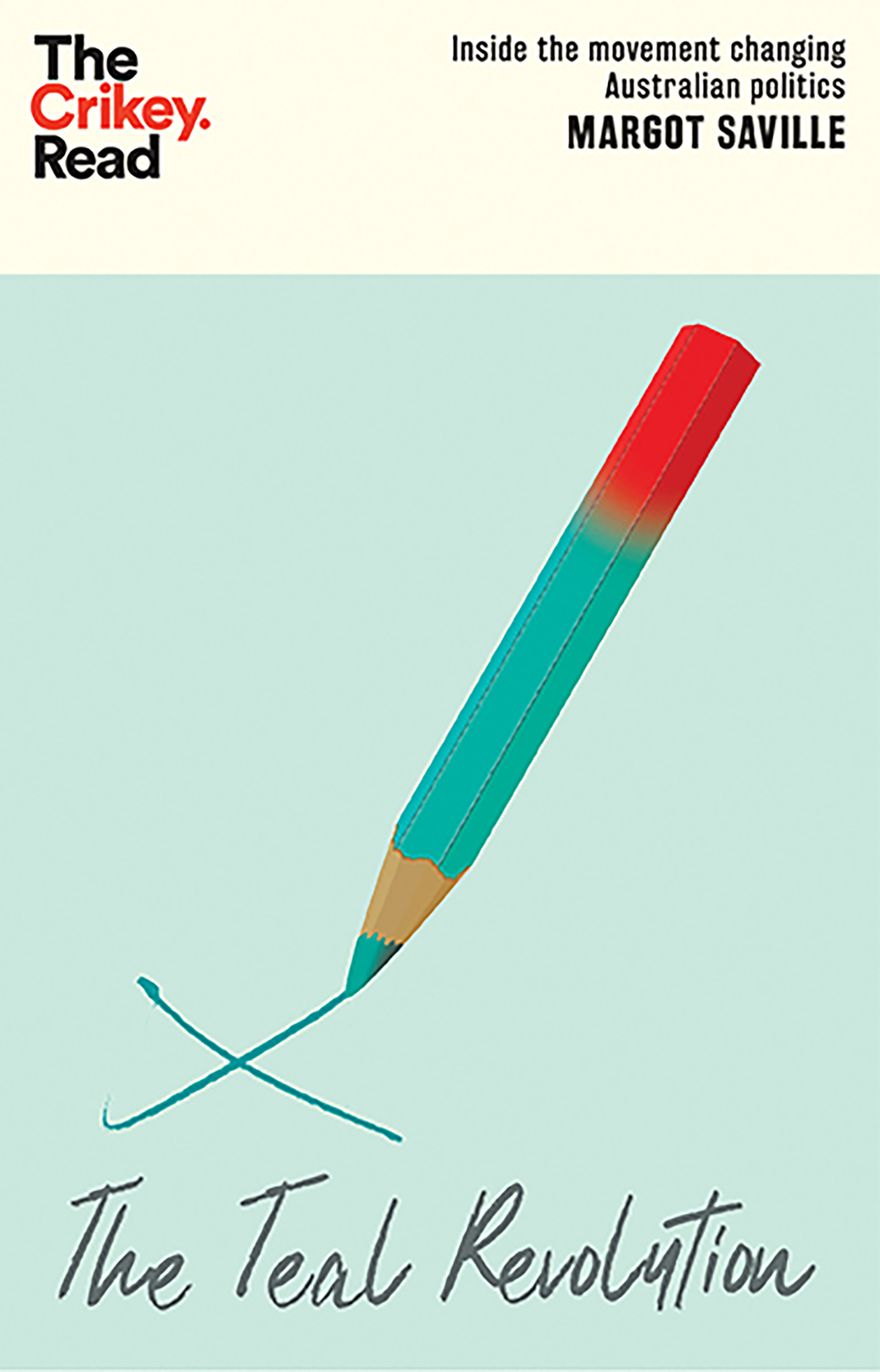
- Book 2 Title: The Big Teal
- Book 2 Biblio: Monash University Publishing, $19.95 pb, 91 pp
- Book 2 Cover Small (400 x 600):
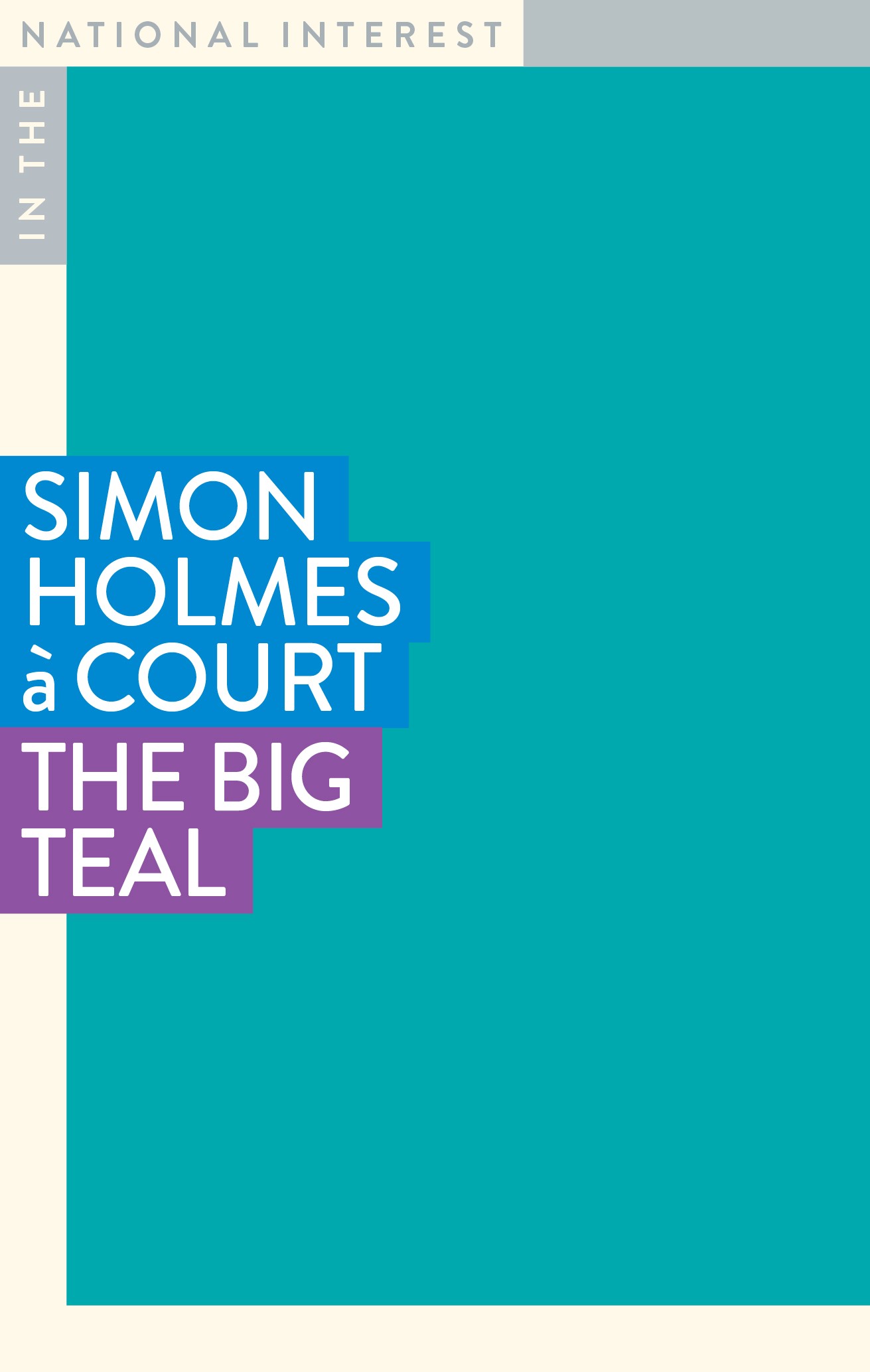
- Book 3 Title: Voices of Us
- Book 3 Subtitle: The independents’ movement transforming Australian democracy
- Book 3 Biblio: NewSouth, $29.99 pb, 224 pp
- Book 3 Cover Small (400 x 600):
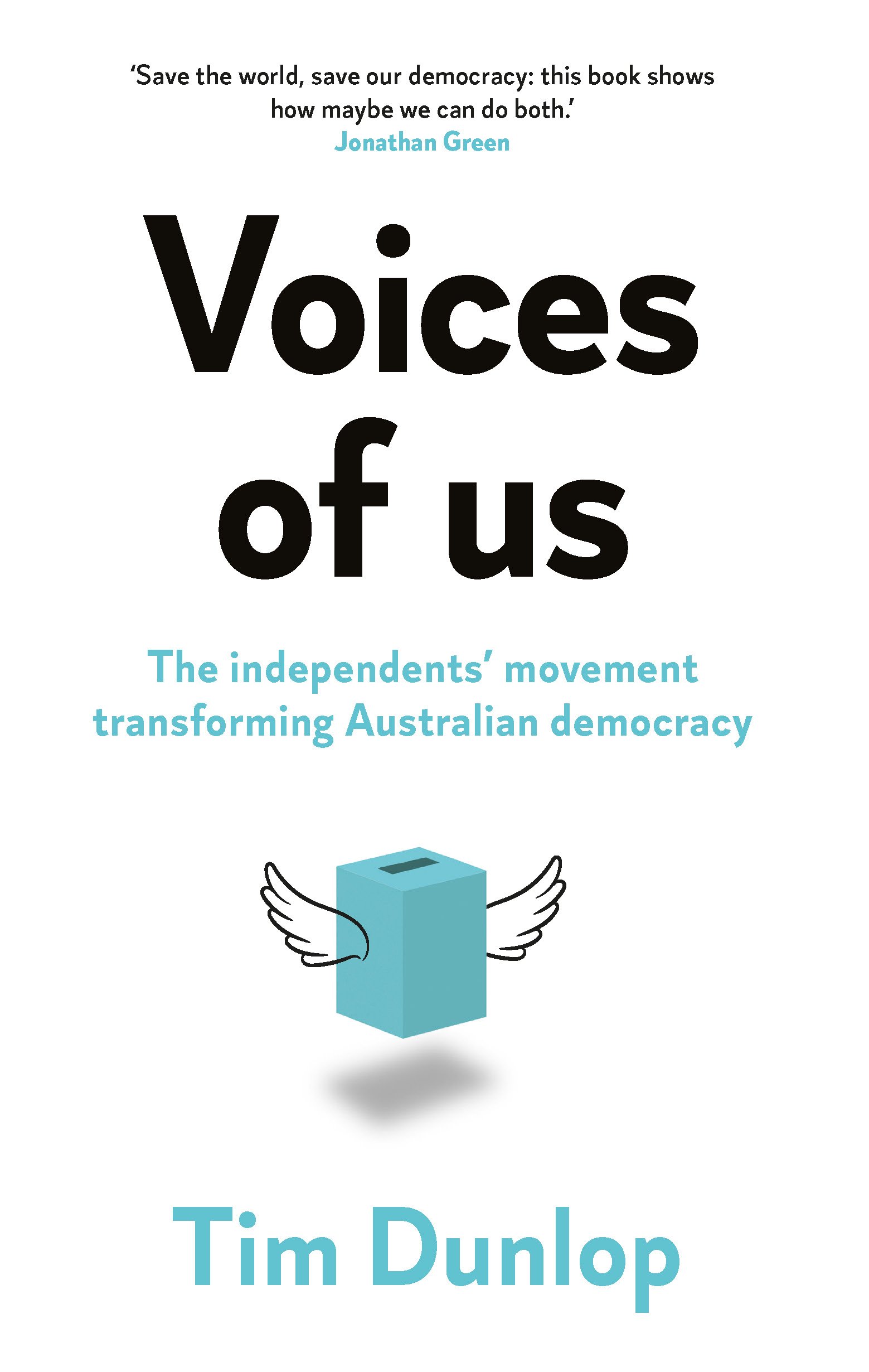
Labor lost a few seats to the new wave. Griffith swung Green, and Dai Le, whom neither Saville nor Dunlop discusses, won a remarkable victory for local voices in the once safe Labor seat of Fowler. Adam Bandt and Andrew Wilkie hold seats that would otherwise have gone to Labor. But Labor picked up a number of seats in middle-class, urban Australia: Bennelong and Reid in Sydney; Chisholm and Higgins in Melbourne; Boothby in Adelaide; and four in Perth. Only in greater Brisbane do the Liberals hold a significant number of metropolitan seats. Holmes à Court claims that climate change cost the Morrison government ‘at least nine seats’, seemingly ignoring Labor’s gains. (Neither Saville nor Dunlop bothers with the rural independents who lost; they were profiled in Margaret Simons’s excellent article in the April 2022 issue of The Monthly.)
Other than Bob Katter, all of the crossbench can be thought of as progressive, at least in comparison with the official Opposition. That number includes four Greens, whom Saville prefers to ignore in her tunnel vision of Australian politics. Yet the success of the Greens last year was arguably as significant as that of the teals; not only did they capture three seats in Brisbane, they also now have ten senators, which makes them a decisive force in whether legislation is passed.
Here, Saville echoes the mainstream media, whose obsession with the teals meant they consistently ignored the growth of Greens support, perhaps because Brisbane was alien territory for interstate reporters. Even where Saville recognises a key issue for the Greens – namely pressure on renters – she manages to slide past the inconvenient fact that the issue hardly featured in any of the teals’ campaigns.
Dunlop argues that the media were hostile to the teals. This was certainly true of the Murdoch press, but not of the Fairfax newspapers or the ABC, both of which gave enormous coverage to the teal independents. (Holmes à Court has chronicled the absurd and offensive attempts by The Australian to smear teals candidates as anti-Semitic.)
The Greens present a problem for the teals. There is something disingenuous in Holmes à Court’s claim that the candidates he supported represented a ‘sensible centre’, when on climate policy they were well to the left of both major parties and close to the Greens. Adoption of the climate targets that Climate 200 support would require major economic adjustments, with real implications for consumption.
Dunlop echoes Holmes à Court when he likens the independents to an ‘empowered middle’, but a few pages later he claims: ‘There is no sensible centre on a dead planet.’ His is the more ambitious book, and it is most interesting in its discussion of the limits the new government faces in seeking to undo many of the assumptions of Howard’s Australia.
Dunlop points to a ‘new mindset’ resulting from several decades of neo-liberal policies, in which: ‘We were less citizens and more customers ... [This] demanded a different mindset just to survive – a more individualistic, if not selfish, self-understanding.’ Morrison’s ability to undermine Bill Shorten’s modest proposals for minor changes to taxation showed just how potent individual greed had become, and explains Anthony Albanese’s commitment to maintaining the Morrison government’s stage 3 tax cuts in 2024.
Dunlop sees the corrosive effects of neo-liberalism, which has made us ‘less citizens and more customers’, but his commitment to the teals means that he skates over their reluctance to tackle growing inequality. Nowhere in either book is there a discussion of homelessness or the inadequacy of JobSeeker, which even John Howard has described as inadequate.
Thus Dunlop can deplore the effective bipartisanship on economic policies without acknowledging that this is largely shared by the teals, who, unlike the Greens, have not prioritised policies that would reverse the swag of tax concessions available to the wealthiest Australians. He does suggest that the Victorian teals are more economically radical than their New South Wales counterparts, which seems accurate.
Zoe Daniel likes to quote Vida Goldstein, after whom her electorate is named: ‘Study has convinced me that party government is a system that is entirely out of date … It is a cumbersome, unbusinesslike method of running the country.’ This may sound good on the hustings, but it hardly stands up to examination. Democratic government requires the creation of a team that can work together to carry out policies on which it has been elected. A parliament of independents would struggle to establish any form of effective government.
Both Dunlop and Saville believe in the need to make politics more participatory and accountable, and they are right to see the growth of support for independents as a sign that many people share this desire. But there is an alternative strategy, one that would involve the people whom they describe joining the major parties and changing them from within. (By the way, whatever happened to Bill Shorten’s plan to increase ALP membership to 100,000?) Sadly, it is right-wing, often fundamentalist groups that have adopted this tactic and seem to have won control of most branches of the Liberal Party.
The first test of how far the old party system is being shaken came in the Victorian state elections in November. After a dispiriting campaign, notable for its negative advertising and blatant pork barrelling, Labor did remarkably well, even while losing votes in both the inner city and the outer western suburbs. The Liberals continued their slide towards oblivion, in part because of lingering dislike of the federal party and its apparent move to the right.
The overthrow of Malcolm Turnbull demonstrated the new balance of power within the Liberal Party and led to a government that was increasingly disconnected from most Australians. Voters knew that in electing teals they were also voting to replace the Morrison government with a Labor one. Some of the drop in Labor’s vote was a tactical decision by Labor voters to support the teals.
Unless the Liberal Party can reposition itself as mainstream and abandon its flirtation with fringe right-wingers and religious fundamentalists, it is unlikely to win back the increasing number of once safe seats now held by independents. Were the Liberal Party really bent on winning office again they would invite Zali Steggall – the most experienced of the teals – to join them as leader, and seriously aim at recapturing the wealthy inner cities. Were some of their right wing to defect, they could join the Nationals, in a major realignment of Australian party politics.


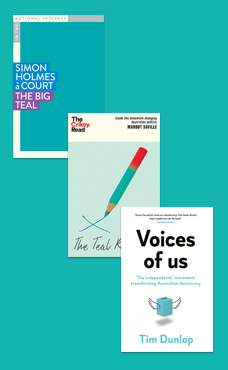
Comments powered by CComment